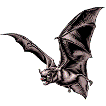Museum, University of Nebraska State

University of Nebraska State Museum: Mammalogy Papers
Document Type
Article
Date of this Version
1959
Abstract
These data are a part of a study of small mammal populations at Cedar Creek Forest, Anoka County, Minnesota. The live-trapping area of 5.0 acres, with 81 traps spaced 52 feet apart, was in a tamarack-white cedar bog. The study extended over a period of 7 years (1949-1955). Trapping periods of five days (four nights) extended from early May to the first part of October. In all, there were 14,580 trap-nights. A total of 428 voles were marked and weighed; data on 25 dead unmarked individuals are also included.
A frequency index was calculated for each station. This index was arrived at by multiplying the number of individuals caught at a station by the number of years they occurred at that station. These indices were grouped and represented on a map. Clethrionomys occupied mostly the white cedar area with sparse to medium cover. Within this area their distribution was most closely correlated with the presence of stumps, rotting logs and root systems in loose forest litter and sphagnum.


Comments
Gunderson in Journal of Mammalogy (August 1959) 40(3). Copyright 1959, American Society of Mammalogists. Used by permission.